This Post May Contain Affiliate Links. Please Read Our Disclosure Policy.
Ever wondered how to cook nopales at home? It’s so easy! I’ll fill you in on everything you need to know when it comes to choosing and cooking cactus paddles, including 2 of my favorite cooking methods. Pretty soon you’ll be pairing this delicious veggie with your Mexican-inspired meals or enjoying it with a simple chimichurri drizzle. YUM!
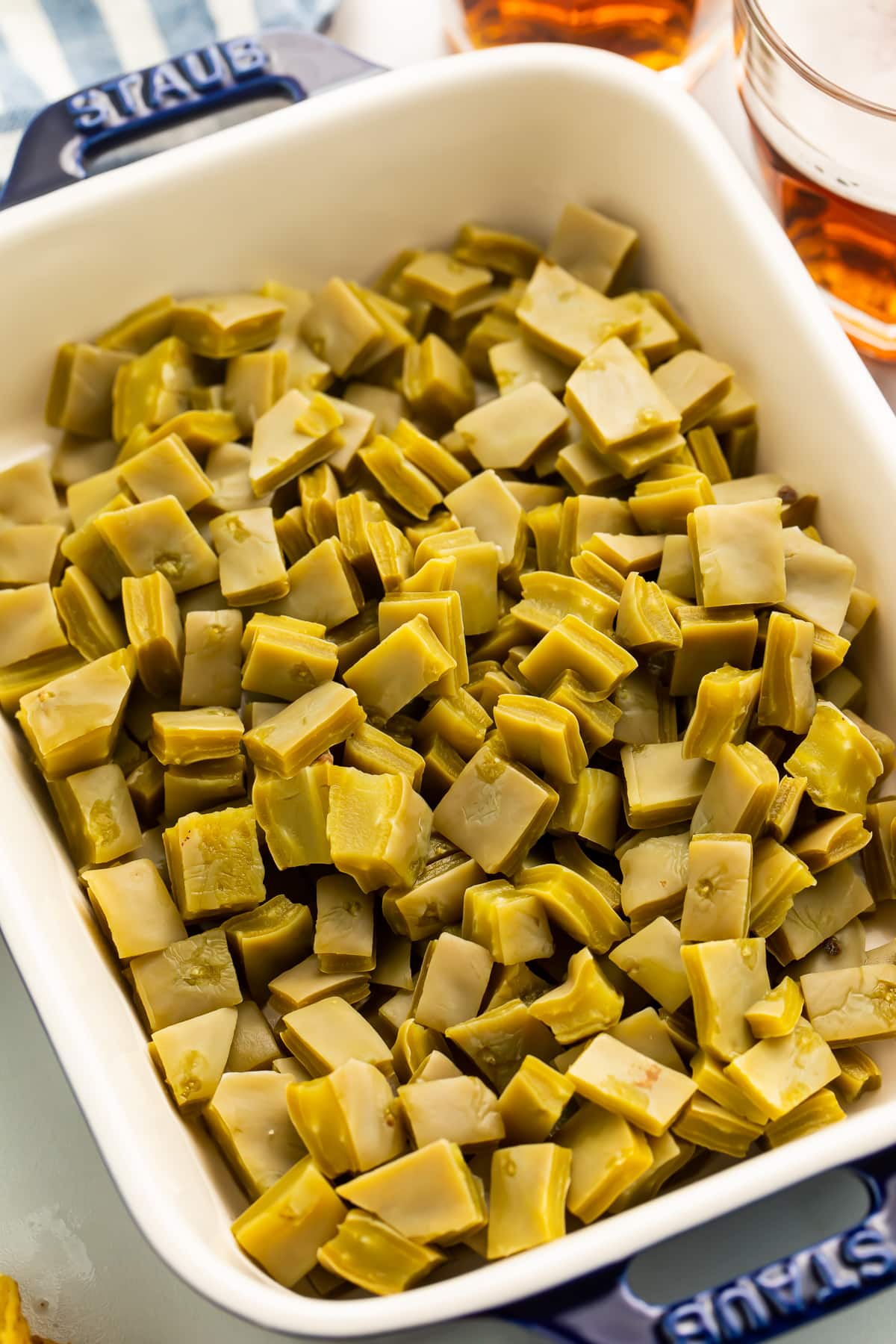
🌵 What Makes This Recipe So Good
- Knowing how to cook nopales is great for a lot of reasons. 1) It’s another easy dish to keep in your back pocket. 2) Nopales are really versatile. 3) They’re delicious. 4) They’re good for you. 5) They’re low carb, keto-friendly, gluten free, dairy free, vegan, vegetarian, paleo, and Whole30-compatible.
- Speaking of “good for you”… Besides fitting various dietary needs, nopal cactus pads contain a bunch of antioxidants, vitamins, and minerals. They’re anti-inflammatory and a good fiber source. Some studies even show they may give your immune system a boost, may lower blood sugar levels, and may help reduce cholesterol.
- Nopales make a great stand-in for meat in dishes like tacos and burritos, in much the same way you’d use eggplant in lasagna or mushrooms for burger buns. They’re hearty and meaty, super tender with a really subtle flavor.
👀 How to Choose Nopales
- Look for paddles that are flexible, but not soft. If they’re floppy or flimsy, keep looking until you find ones that just bend, with a little bit of give.
- They should be bright green, without dark spots. The brighter the better!
- Try to get paddles that are 6-8 inches long. Smaller nopales are more tender, but also more difficult to work with. Larger nopales can be tough or stringy.
👩🏼🍳 Chef’s Tips
- Handling nopales can be a little tricky… they’re prickly pear cactus leaves, after all! Usually when you get nopales at the grocery store, most of the thorns have already been removed. You may still need to do a little trimming, though. Hold the cactus paddles with tongs or a kitchen towel so you’re not grabbing the thorns directly. They can be sharp! You can also wear gloves if that’s easier.
- If you happen to live in the southwestern United States or Mexico, where prickly pear cacti abound, then you’re probably already familiar with where to find and how to cook nopales. They’re typically available at most grocery stores out that way – I know HEB carried a mess of them when I lived in Austin! If you’re further out, though, you may need to visit a well-stocked international market to find your cactus pads.
🥗 Ways to Use Nopales
- On their own, tossed in chimichurri and then topped with a sprinkle of shredded pepper jack.
- In tacos, with chicken, beef, steak, or shrimp.
- With carne asada, rice, beans, and grilled or sautéed onions.
- Stuffed into burritos, folded into quesadillas, or added to fajitas.
- As the base for salads or an add-in for burrito bowls.
- Inside a Mexican omelette or breakfast tacos, with huevos rancheros, or as part of a chorizo breakfast bowl.
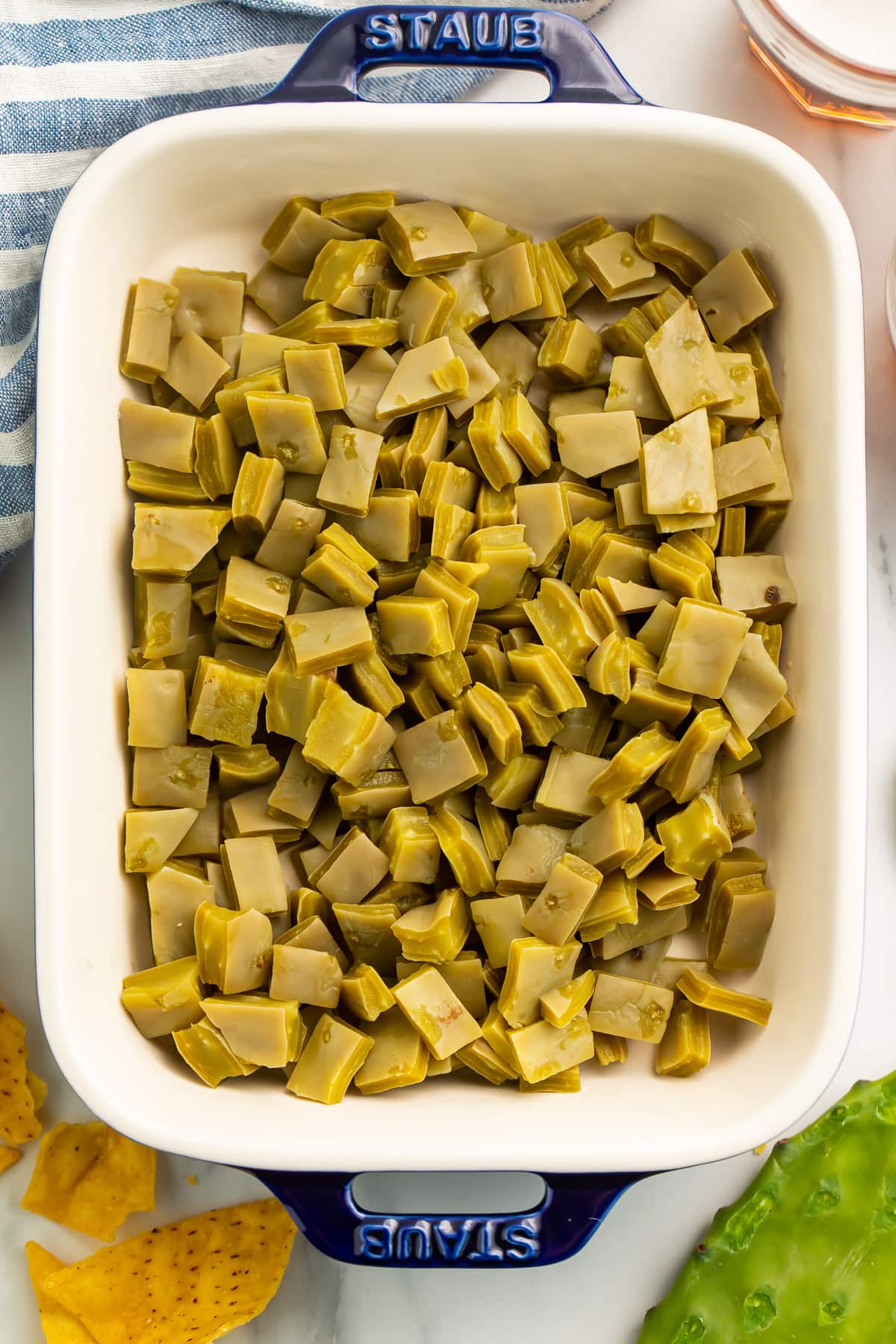
🌮 Mexican-Inspired Recipes We Can’t Get Enough Of
- Mexican Chicken and Rice Bake
- Tuna Tostadas
- Keto Tacos with Homemade Keto Tortillas
- Mexican Chicken Stuffed Sweet Potatoes (Whole30, Paleo, Instant Pot)
- Crispy Cheesy Refried Bean Tacos
- Burrito Suizo
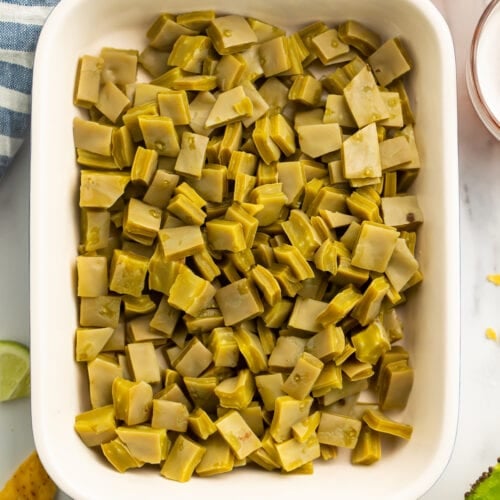
How to Cook Nopales (Cactus Paddles)
Equipment
- Tongs optional, see Notes
- gloves or kitchen towel, optional; see Notes
- Cutting board
- Sharp knife or potato peeler
- running water
- Large pot with lid if boiling nopales
- medium skillet with lid if sweating nopales
- colander or strainer
Ingredients
For Boiled Nopales
- 4 medium nopales paddles 5-8 inches long, approximately 1 pound
- 1-2 teaspoons salt more or less to taste
- 3 cloves garlic smashed
For Sweated Nopales
- 4 medium nopales paddles 5-8 inches long, approximately 1 pound
- 1 teaspoon salt more or less to taste
- 1 tablespoon neutral oil avocado oil, olive oil, etc.
Instructions
To Prepare the Nopales
- Use knife (or potato peeler) to carefully remove knobs and thorns from paddles. Work inward, moving from end of nopales toward thick base using gentle sawing motion. Leave as much skin on paddles as possible.
- Once knobs and thorns are removed, carefully trim paddles. Remove approximately ¼-inch from end of nopales and approximately ½-inch from thick base of nopales.
- Wash trimmed nopales under running water, then slice paddles into strips or squares. Set aside.
For Boiled Nopales
- Fill large pot with water and salt well. Add smashed garlic cloves to water and place pot over high heat. Bring water to boil.
- Once liquid begins to boil rapidly, add prepared nopales to pot. Cover pot with lid and boil nopales 8 to 10 minutes or until paddles are tender and mucilage has seeped out.
- Carefully pour liquid and nopales through colander or strainer. Rinse boiled nopales well under running water to remove any remaining mucilage, then enjoy as desired. See Notes for serving suggestions.
For Sweated Nopales
- Heat medium skillet over medium-high heat. When skillet is hot, add 1 tablespoon neutral oil and swirl pan to coat. Heat oil until hot and shimmering, then add prepared nopales to skillet and generously sprinkle salt over.
- Reduce heat to medium and cover skillet with lid. Let nopales cook, covered, 20 minutes, or until mucilage has evaporated.
- Remove skillet from heat and use sweated nopales as desired.
- The thorns on nopales can be sharp. Use tongs and/or wear gloves (or use a kitchen towel) to handle the paddles as you trim off the thorns and knobs.
- The mucilage (a.k.a. baba) from the nopales is safe to eat, but it’s gelatinous, and the sliminess can be unappealing.
- Leftovers: Leftover nopales can be refrigerated in an airtight container up to 2 weeks.
Serving Suggestions for Boiled Nopales
To Enjoy on Their Own
- Follow directions above for boiling nopales. Strain and rinse nopales well, then return boiled nopales to pot.
- Add chimichurri sauce and toss nopales to coat completely, then sprinkle shredded pepper jack cheese over.
- Cover pot with lid and remove pot from heat. Keep covered until cheese has melted, then serve nopales as-is.
To Use in Salads, Tacos, etc.
- Follow directions above for boiling nopales. Strain and rinse nopales well, then use boiled nopales as desired in salads, tacos, burritos, etc.
Approximate Information for One Serving
Nutrition Disclaimers
Number of total servings shown is approximate. Actual number of servings will depend on your preferred portion sizes.
Nutritional values shown are general guidelines and reflect information for 1 serving using the ingredients listed, not including any optional ingredients. Actual macros may vary slightly depending on specific brands and types of ingredients used.
To determine the weight of one serving, prepare the recipe as instructed. Weigh the finished recipe, then divide the weight of the finished recipe (not including the weight of the container the food is in) by the desired number of servings. Result will be the weight of one serving.
Did You Make This Recipe?
Tag @40aprons on Instagram and be sure to leave a review on the blog post!
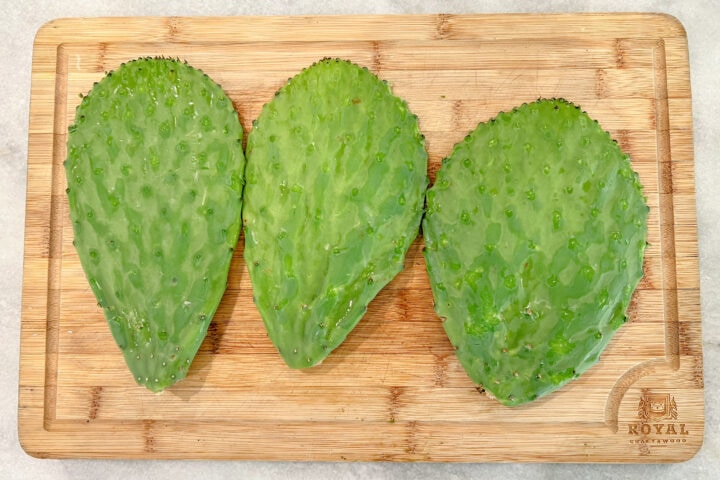
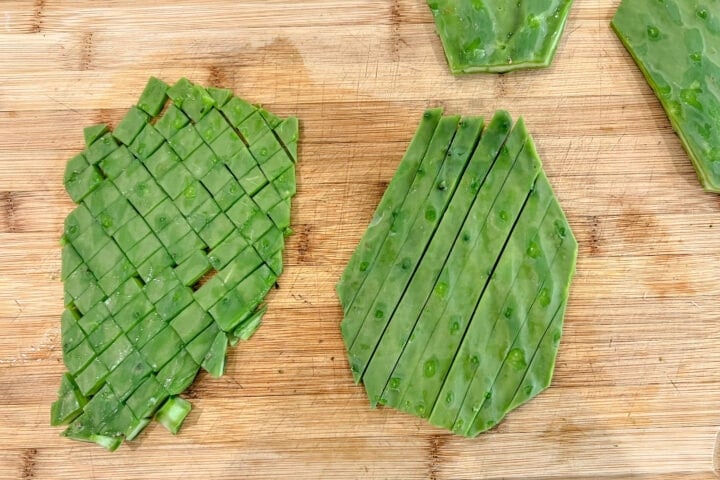
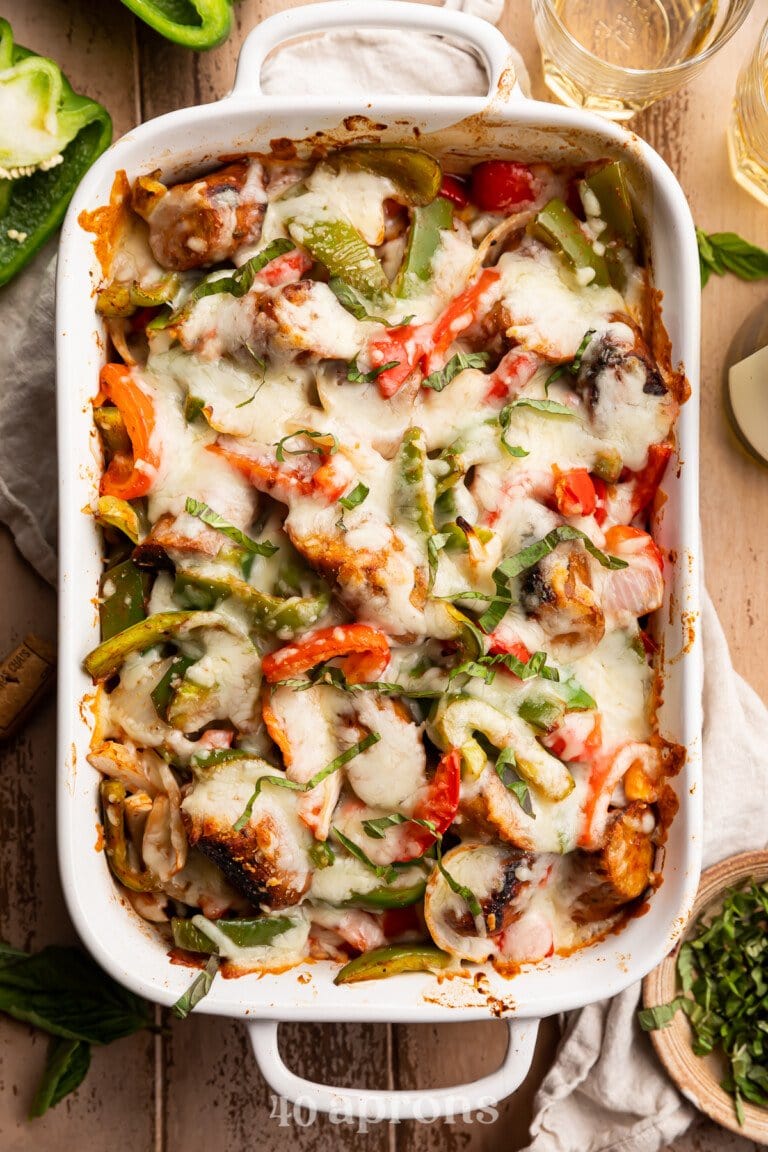
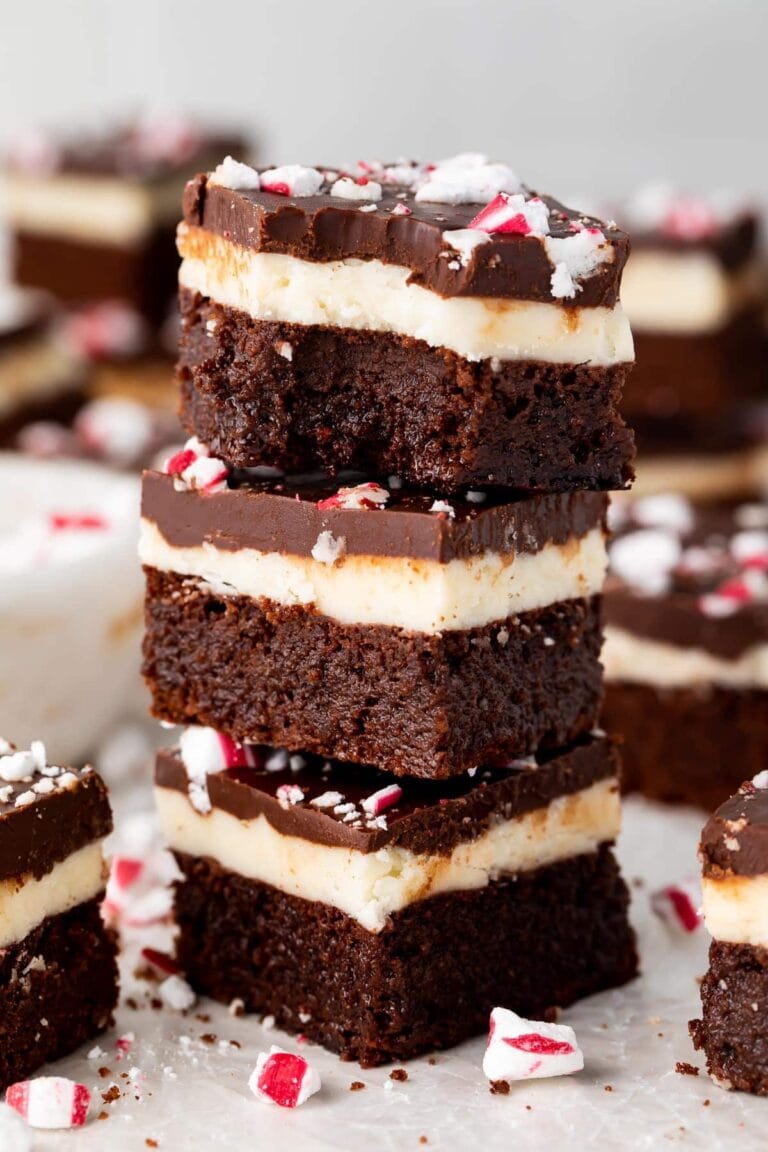
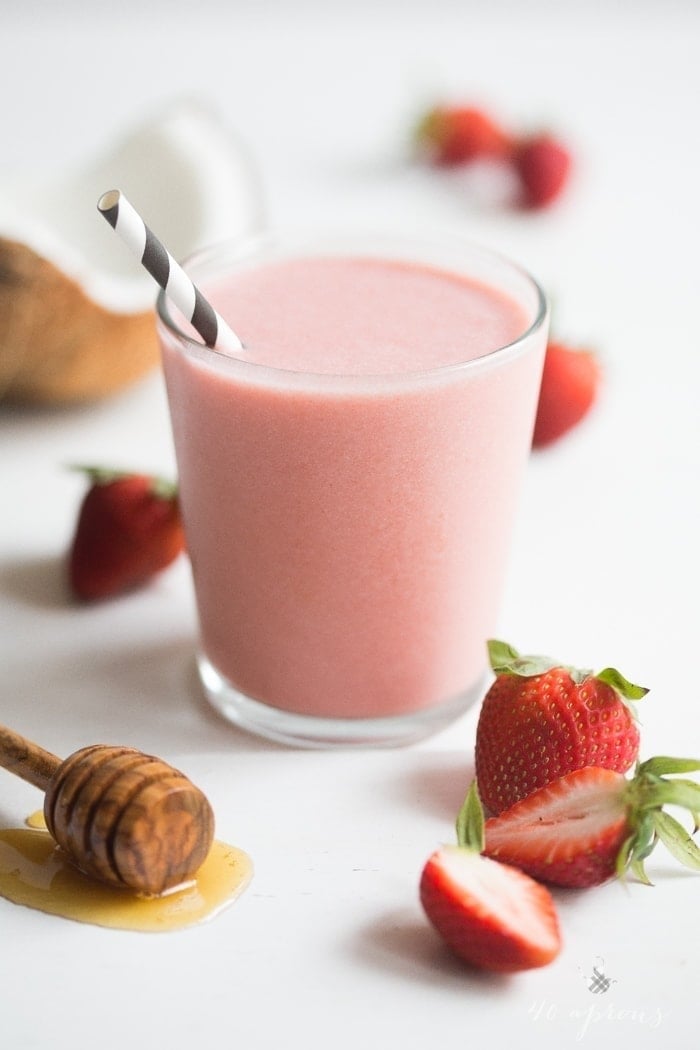
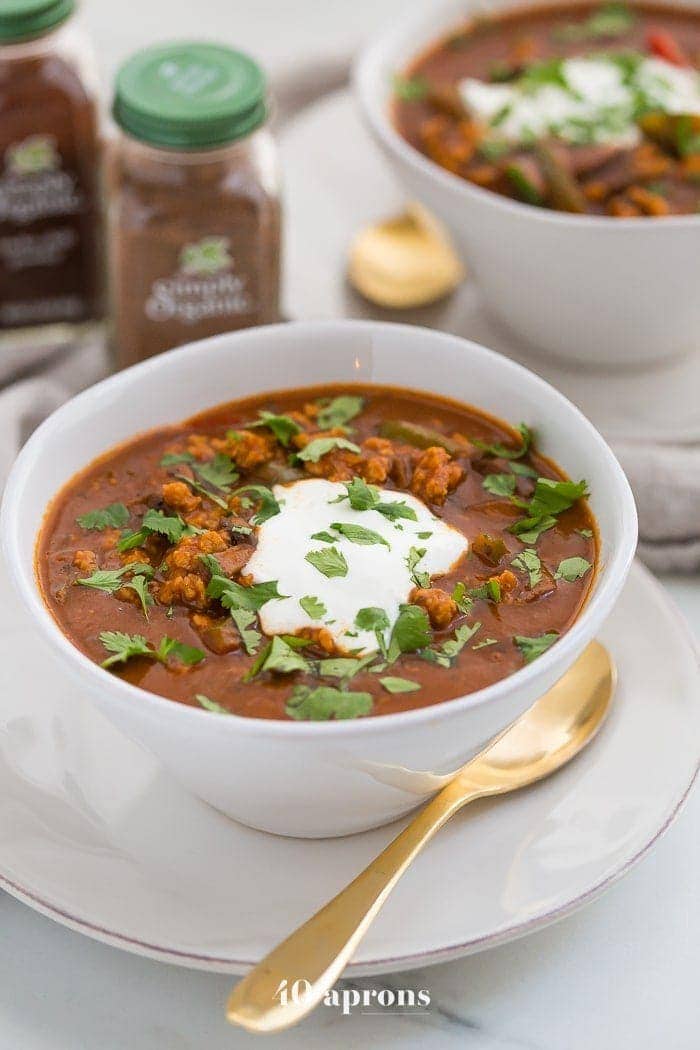
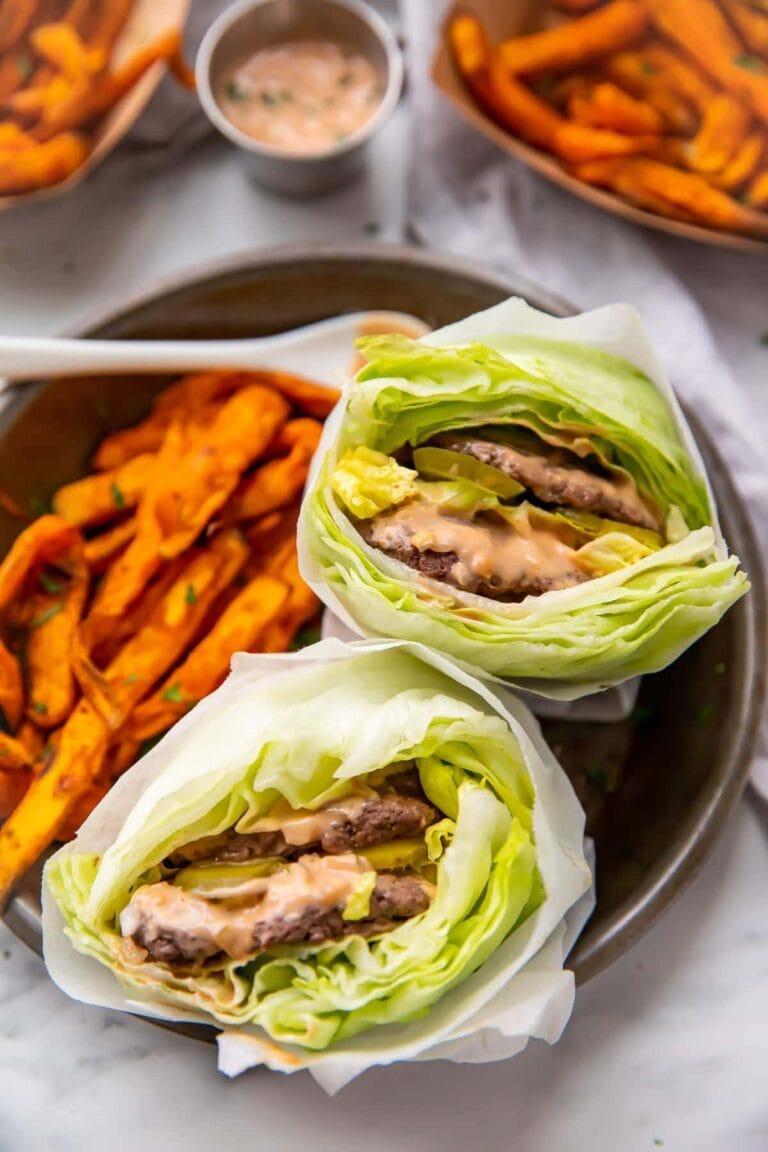
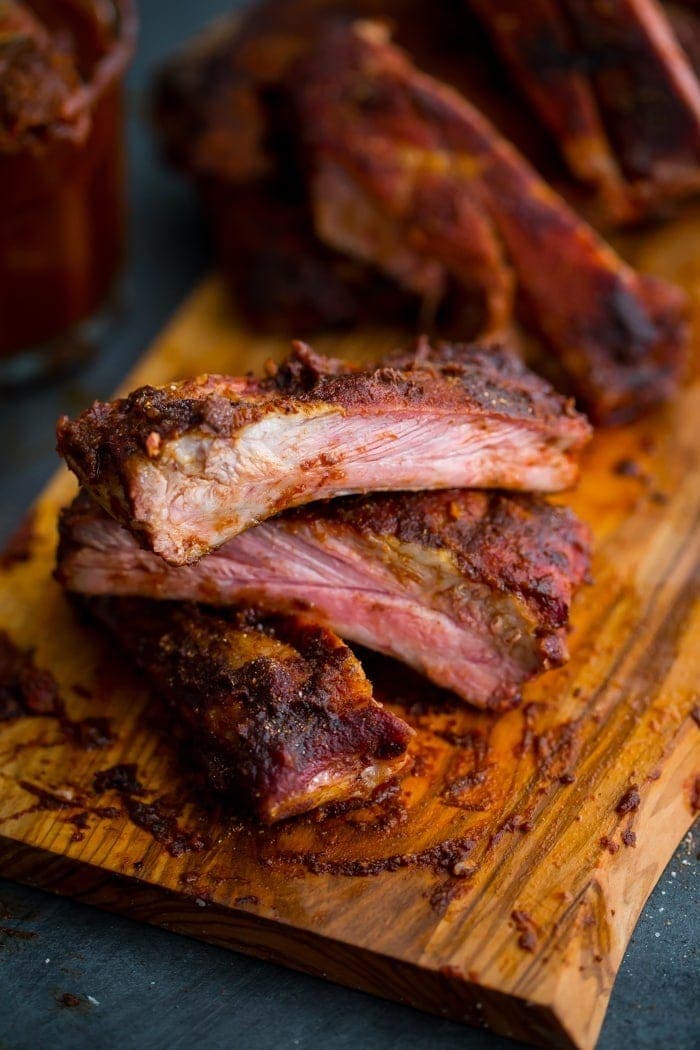










Can the leftover water be use as a tea once nopal is boiled and ready to eat?
We haven’t tried that so can’t say for sure. Let us know if you do!
So I boiled for 10 and sautéed for over 20 minutes, it is soft and yummy but the skin just has the texture of skin.. not sure how to fix that!
How long do the leftovers keep? Can the leftovers be frozen?
Leftovers can be refrigerated up to 2 weeks! They can be frozen but it can change the texture.